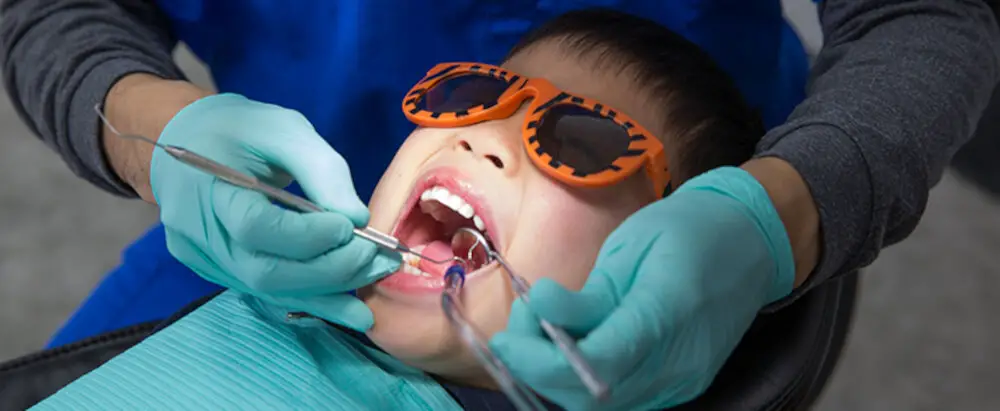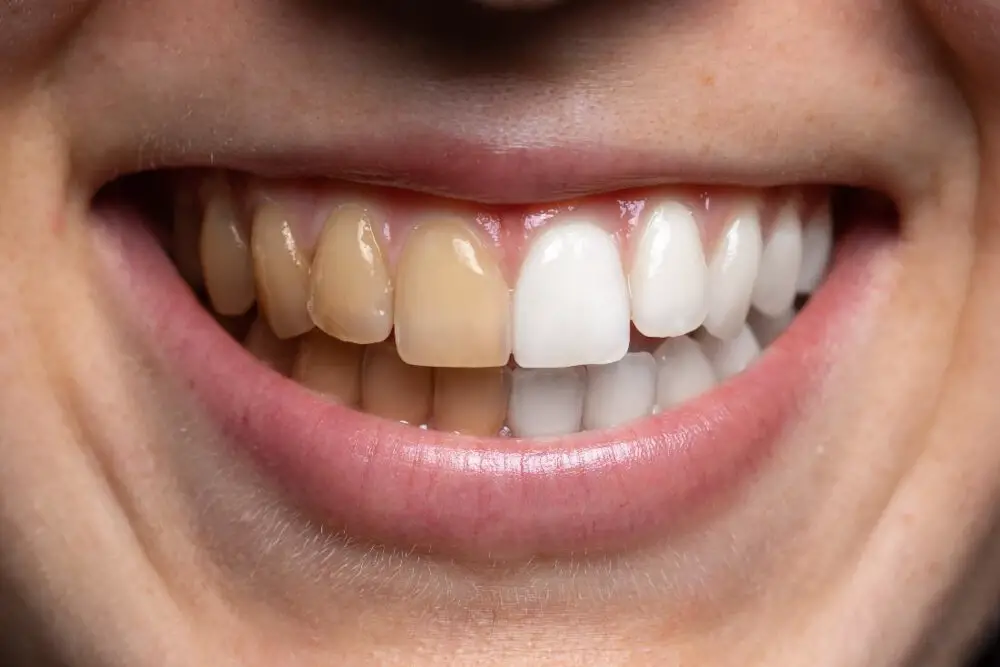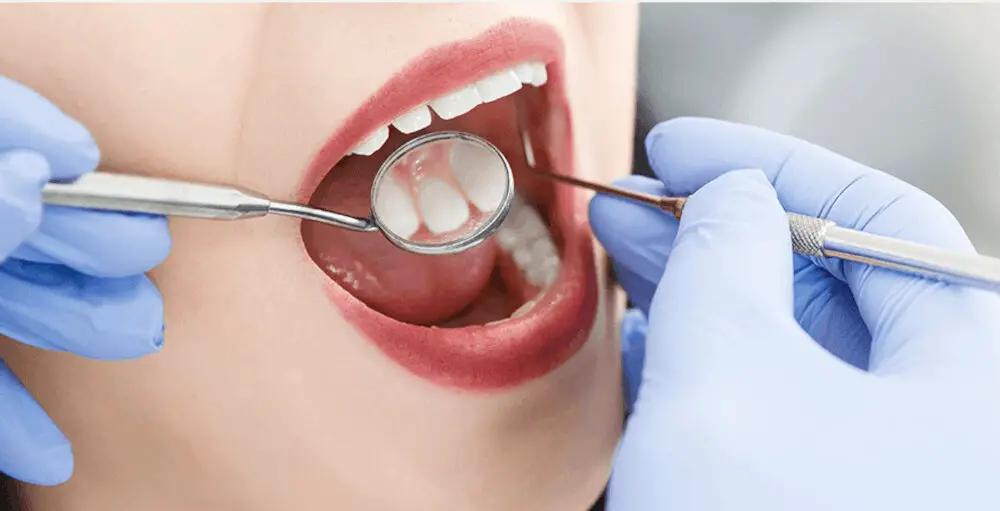How Long to Keep Gauze After Wisdom Teeth Extraction: Expert Advice

Wisdom teeth extraction is a common dental procedure that many people undergo in their lifetime. It involves removing one or more of the four molars located at the back of the mouth. The healing process after wisdom teeth extraction can be lengthy and uncomfortable, but proper post-operative care can help. One of the most common questions that patients have after their procedure is how long to keep gauze in their mouth. This article will provide expert advice on how long to keep gauze after wisdom teeth extraction. Gauze is typically used to control bleeding after wisdom teeth extraction. The gauze helps to absorb blood and promote the formation of a blood clot, which is necessary for proper healing. It is important to follow the instructions provided by your dentist or oral surgeon regarding gauze usage after your procedure. Failure to do so can prolong the healing process and lead to complications. In this article, we will discuss the appropriate timeline for gauze usage after wisdom teeth extraction and provide tips for proper post-operative care.
Wisdom teeth extraction is a common dental procedure that involves the removal of one or more third molars located at the back of the mouth. This is done to prevent overcrowding, infection, or damage to nearby teeth and gums. After the extraction, the dentist will typically place gauze over the extraction site to control bleeding and promote clotting. The gauze should be gently applied and kept in place for 30-45 minutes, after which it can be removed and discarded. It is important to follow the dentist’s instructions regarding the use of gauze to ensure proper healing and avoid complications such as dry socket or infection.
Following aftercare instructions is crucial for a successful recovery after any medical procedure, including wisdom teeth extraction. The aftercare instructions given by the dentist or oral surgeon are designed to ensure that the extraction site heals properly and that the risk of complications such as infection is minimized. These instructions may include changing gauze regularly, avoiding certain foods and behaviors, and taking medication as prescribed. It is important to follow these instructions closely and not to deviate from them, as doing so can increase the risk of complications and prolong the healing process. By following aftercare instructions, patients can help to ensure a smooth and speedy recovery and minimize discomfort and pain.
The Purpose of Gauze After Wisdom Teeth Extraction

After getting your wisdom teeth extracted, your dentist or oral surgeon will place a piece of gauze on the extraction site. The purpose of the gauze is to control bleeding and promote the formation of a blood clot, which is essential for proper healing. The pressure applied by the gauze helps the blood to clot and prevents excessive bleeding. After a few hours, the gauze will become saturated with blood and needs to be replaced with a fresh one. The length of time that you should keep the gauze in your mouth depends on the severity of the extraction and the amount of bleeding. Your dentist or oral surgeon will give you specific instructions on how long to keep the gauze in place. It’s essential to follow the instructions given to you by your dentist or oral surgeon regarding the use of gauze after wisdom teeth extraction. Failure to do so can result in complications such as dry socket, which occurs when the blood clot is dislodged or dissolved, exposing the underlying bone and nerve endings. Dry socket can be extremely painful and can delay the healing process. Keeping the gauze in place for the recommended period is crucial to avoid complications and ensure proper healing. If you experience excessive bleeding or discomfort, contact your dentist or oral surgeon immediately.
After wisdom teeth extraction, gauze is used to control bleeding and promote clotting in the tooth socket. When a tooth is removed, it leaves an empty space in the gum which can bleed for several hours. The dentist will place a piece of sterile gauze over the socket and ask the patient to bite down gently for around 30-45 minutes. This pressure helps the blood to clot and form a protective scab over the wound. The gauze also helps to absorb any excess blood and saliva, preventing the patient from swallowing blood and reducing the risk of infection. It is recommended to keep the gauze in place for the first hour after the procedure and replace it as necessary until the bleeding stops.
Gauze is an essential tool for controlling bleeding and promoting blood clotting after wisdom teeth extraction. When placed over the extraction site and bitten down on firmly, the gauze creates pressure on the wound, which helps to compress blood vessels and slow down or stop bleeding. Additionally, the gauze acts as a barrier to protect the wound from exposure to bacteria, which could cause infection. The material of the gauze also promotes blood clotting. As the blood begins to clot, the gauze helps to hold the clot in place, preventing it from being dislodged by movements of the mouth or tongue. Overall, gauze is a crucial component of post-extraction care that helps to ensure proper healing and minimize the risk of complications.
How Long to Keep Gauze in Your Mouth

After a wisdom tooth extraction, your dental surgeon will place gauze in your mouth to help control bleeding and promote clotting. It’s essential to keep the gauze in your mouth for the recommended amount of time to ensure proper healing and reduce the risk of complications. Typically, you should keep the gauze in place for at least 30-45 minutes after the surgery. If you experience continued bleeding, your dentist may instruct you to keep the gauze in place for a longer period. It’s crucial to follow your dentist’s instructions regarding how long to keep gauze in your mouth after wisdom teeth extraction. Some people may experience more bleeding than others, depending on the complexity of the extraction and individual factors such as blood clotting time. To avoid dislodging the blood clot that forms in the socket, you should avoid spitting, rinsing, or drinking through a straw for the first 24 hours after surgery. If you experience severe bleeding, swelling, or other complications, contact your dental surgeon immediately for advice.
After undergoing wisdom teeth extraction, it’s crucial to follow the instructions provided by your dentist or oral surgeon. One of the essential guidelines is to keep gauze in your mouth for the recommended duration. Typically, the gauze should be kept in place for at least 30-45 minutes after the procedure to control bleeding. However, it’s essential to change the gauze every 30 minutes or as directed by your dentist. If the bleeding persists beyond the recommended time, gently bite down on a new gauze pad or a moistened tea bag and hold it in place for an additional 30-45 minutes. Remember to avoid spitting, rinsing, or drinking through a straw immediately after the surgery as it may dislodge the blood clot and delay the healing process.
After a wisdom teeth extraction, the length of time gauze needs to be used can depend on several factors. The extent of the extraction is one of the main factors that can affect the duration. If the extraction is more complex or involves multiple teeth, the dentist may require the patient to keep the gauze in place for a longer time to ensure proper healing. Additionally, individual healing factors, such as age, overall health, and medication use can play a role in how long gauze needs to be used. Patients who are older or have underlying health conditions may require more time for healing and may need to use gauze for a longer period. Ultimately, it is essential to follow the dentist’s instructions and monitor the healing process to determine when it is safe to stop using gauze.
Tips for Using Gauze After Wisdom Teeth Extraction

After a wisdom teeth extraction, it is common to experience some bleeding and discomfort. To help control bleeding and facilitate healing, your dentist or oral surgeon may recommend using gauze pads. However, it is important to use gauze correctly to avoid complications. Here are some tips to keep in mind when using gauze after wisdom teeth extraction:Firstly, make sure to replace the gauze pads regularly. Using the same gauze pad for too long can cause bacteria buildup and make it difficult for the wound to heal properly. It is recommended to change the gauze every 30 to 45 minutes or as directed by your dentist or oral surgeon. Also, make sure to use clean hands when replacing the gauze to avoid introducing bacteria into the wound. Secondly, be gentle when removing the gauze. The wound may be tender, so be careful not to disturb the blood clot that has formed. To remove the gauze, moisten it with water or saline solution, then gently pull it out using a rolling motion. Do not yank or pull the gauze out forcefully, as this can dislodge the blood clot and cause bleeding to resume. Remember to follow all post-operative instructions provided by your dentist or oral surgeon to ensure a smooth and speedy recovery.
Proper technique for placing and removing gauze after wisdom teeth extraction is crucial to promote healing and prevent complications. When placing gauze, make sure to use clean hands and place it directly on the extraction site, applying gentle pressure for at least 30-45 minutes to help stop bleeding. It’s important to avoid biting down hard on the gauze to prevent dislodging the blood clot. When removing the gauze, use clean hands and a gentle pulling motion to prevent damaging the extraction site. It’s recommended to change the gauze every 45 minutes to an hour until bleeding stops, and to avoid using straws or smoking which can cause suction and dislodge the blood clot. By following these proper techniques for gauze placement and removal, patients can ensure a smoother and more comfortable recovery after wisdom teeth extraction.
After wisdom teeth extraction, the use of gauze is essential to help control bleeding and promote healing. However, prolonged use of gauze can cause discomfort and increase the risk of complications such as dry socket. To manage discomfort and minimize potential complications related to gauze use, it is recommended to change the gauze every 30-45 minutes for the first few hours after the procedure. After that, the frequency of changing can be reduced to every 2-3 hours until the bleeding stops. It is also important to avoid excessive spitting, rinsing, or touching the extraction site, as these actions can dislodge the blood clot and delay healing. Additionally, applying a cold compress to the cheek can help reduce swelling and discomfort. Overall, following these suggestions can help ensure a smooth and comfortable recovery after wisdom teeth extraction.
When to Stop Using Gauze After Wisdom Teeth Extraction

After wisdom teeth extraction, using gauze is an important part of the healing process. It helps to control bleeding and promotes blood clotting. However, it is crucial to know when to stop using gauze to avoid further complications. Typically, gauze should be changed every 30-45 minutes for the first 2-3 hours following the extraction. After that, gauze should be changed as needed, but it is important to reduce the frequency gradually. As the bleeding slows down, gauze can be removed completely. This usually occurs within 3-4 hours after the procedure. If bleeding persists even after 4 hours, it is recommended to contact a dental professional for further evaluation and treatment. It is important to note that using gauze for too long can cause a dry socket, which is a painful condition that occurs when the blood clot is dislodged or dissolved before the wound is fully healed. This can delay the healing process and cause discomfort. Therefore, it is crucial to follow the instructions provided by the dental professional and to not use gauze longer than necessary. In addition, it is recommended to avoid spitting, rinsing, or drinking through a straw for the first 24 hours after the procedure to avoid dislodging the blood clot. Overall, knowing when to stop using gauze after wisdom teeth extraction is essential for a smooth and effective healing process.
Gauze is a common material used to control bleeding after wisdom teeth extraction. However, it is important to know when to stop using it. One sign that it is time to remove the gauze is decreased bleeding. If the bleeding has significantly slowed down or stopped, it may be time to remove the gauze. Another sign is the formation of a blood clot. If a blood clot has formed at the extraction site, it is important to stop using gauze to avoid disturbing the clot and causing more bleeding. It is also important to follow the instructions of your dentist or oral surgeon to ensure proper healing after wisdom teeth extraction.
If bleeding persists even after discontinuing the use of gauze following wisdom teeth extraction, it is important to take immediate action to prevent further complications. First, try biting down on a damp tea bag or a piece of moist gauze for around 30 minutes to help stop the bleeding. If this does not work, contact your dentist or oral surgeon right away for further instruction. They may recommend using a medicated mouthwash, applying a topical hemostatic agent, or even getting stitches to close the wound. It is crucial to follow their instructions carefully and avoid strenuous activities, smoking, and consuming hot or hard foods until the bleeding has completely stopped.
After wisdom teeth extraction, it is common to have gauze placed over the extraction site to help control bleeding. It is important to keep the gauze in place for at least 30-45 minutes to allow for clotting to occur. After this time, the gauze can be removed and replaced with a fresh piece if necessary. It is recommended to change the gauze every 45-60 minutes until bleeding slows down and eventually stops. It is also important to avoid disturbing the extraction site by not rinsing or spitting forcefully, using straws, or smoking for at least 24 hours after the surgery. Following these guidelines can help promote proper healing and reduce the risk of complications after wisdom teeth extraction.
Following the aftercare instructions provided by your dental professional is crucial for a successful recovery after a wisdom teeth extraction. Neglecting proper care may lead to complications such as infection, excessive bleeding, and prolonged healing time. Your dentist may suggest using gauze to control bleeding and swelling, and it’s essential to follow their directions on how long to keep the gauze in your mouth. Additionally, maintaining good oral hygiene, avoiding smoking, and sticking to a soft-food diet for the recommended time frame are vital steps to ensure a speedy and smooth recovery. By taking care of your mouth after the surgery, you can minimize any discomfort and promote proper healing.
Conclusion

In conclusion, it is imperative to follow the aftercare instructions given by your dentist after wisdom teeth extraction, including how long to keep gauze in your mouth. While the duration may vary from person to person, depending on the extent of the surgery and the rate of bleeding, it is generally recommended to change the gauze every 30-45 minutes for the first few hours after surgery. As the bleeding subsides, the frequency of gauze changes will decrease, and you can switch to using a saline rinse to keep the surgical site clean. It is crucial to be patient and allow your body to heal at its own pace, while also seeking medical attention if bleeding persists or worsens. With proper care and attention, you can ensure a smooth and speedy recovery after wisdom teeth extraction.







